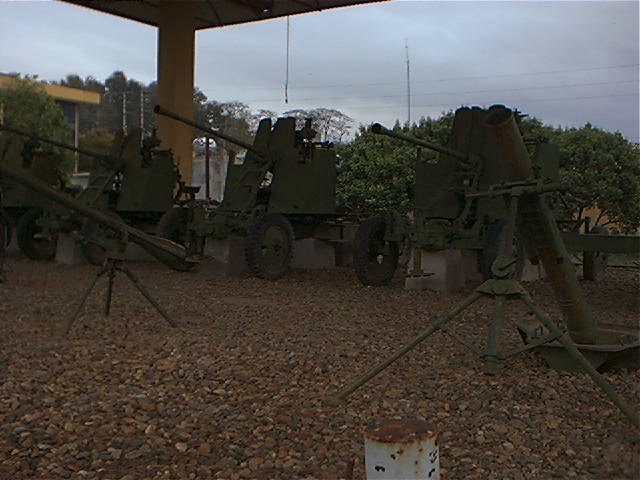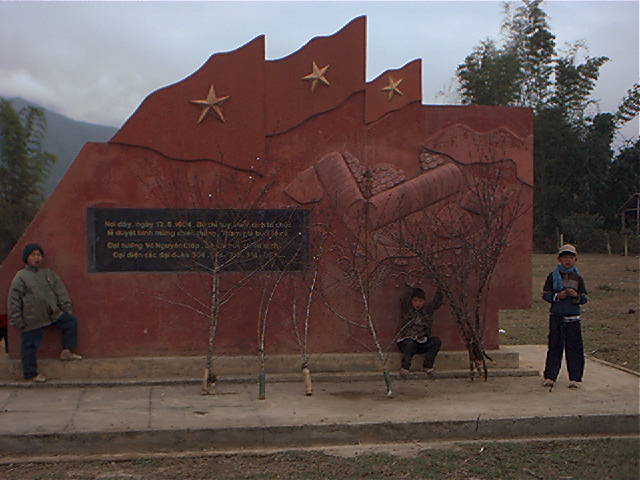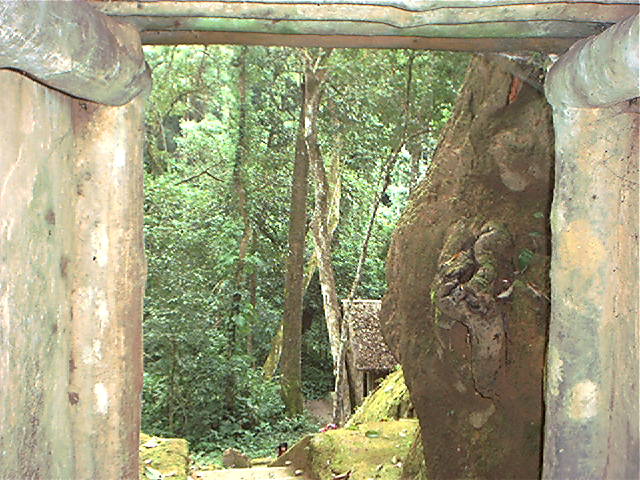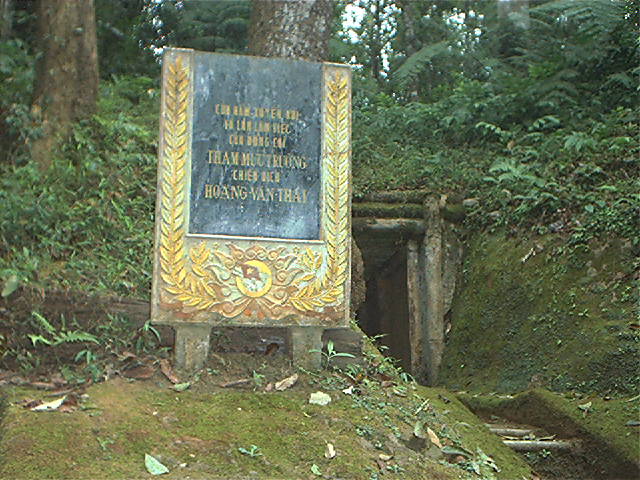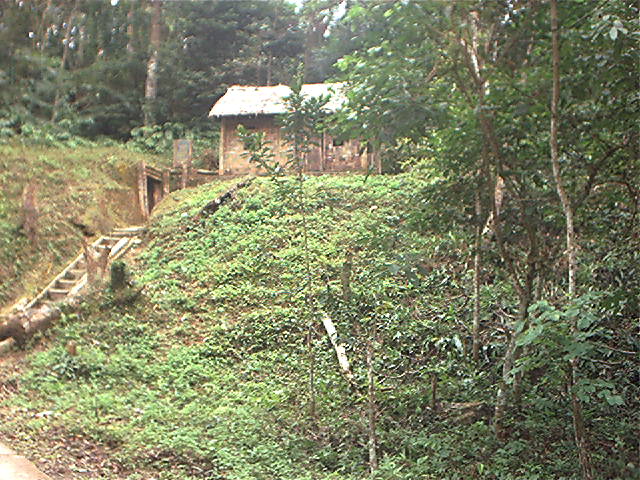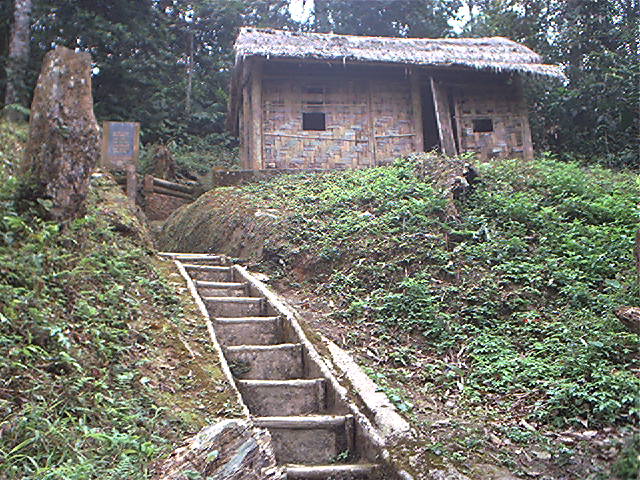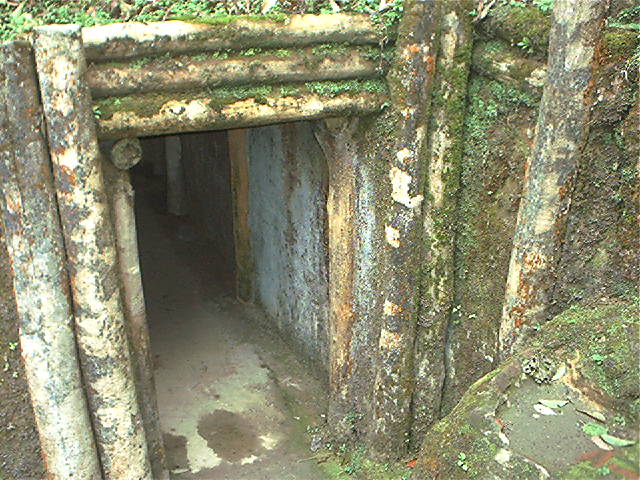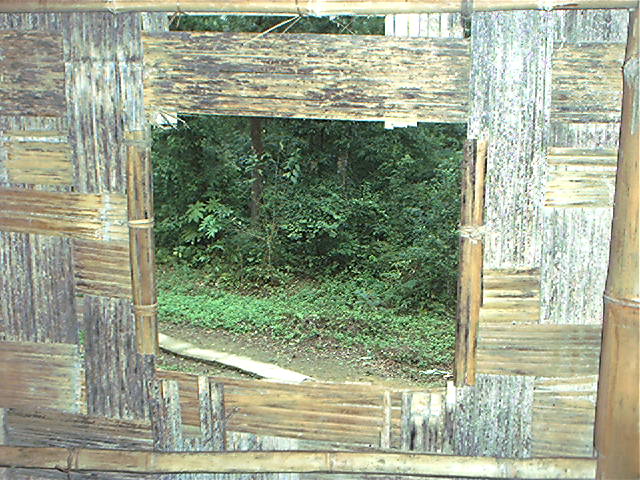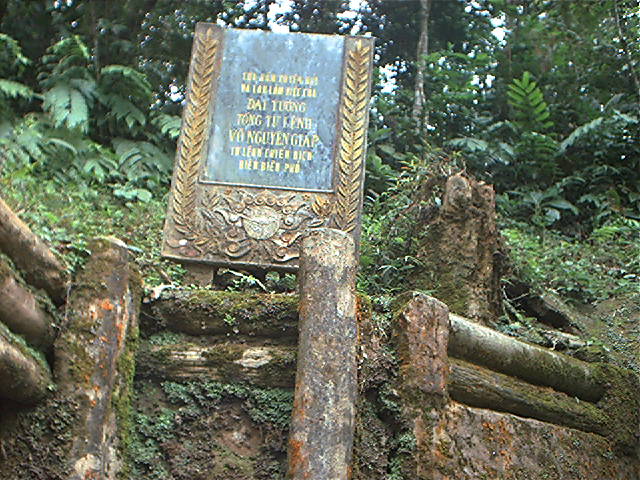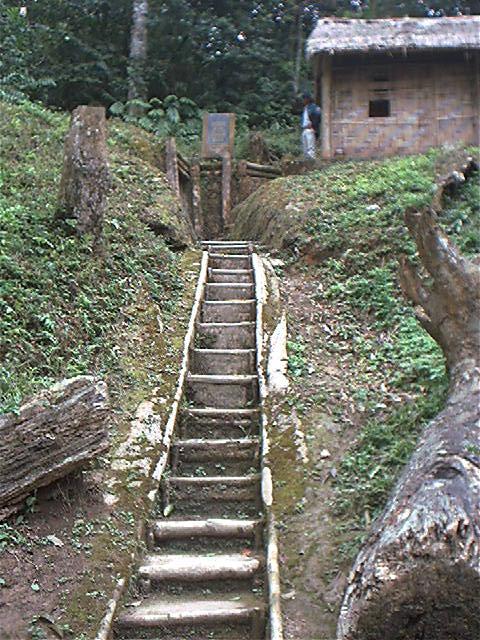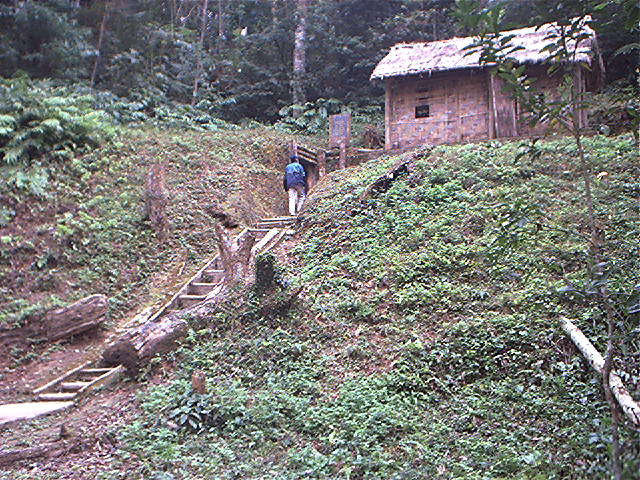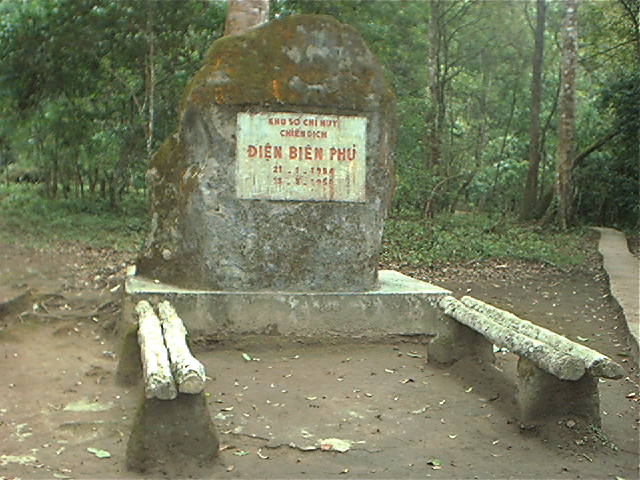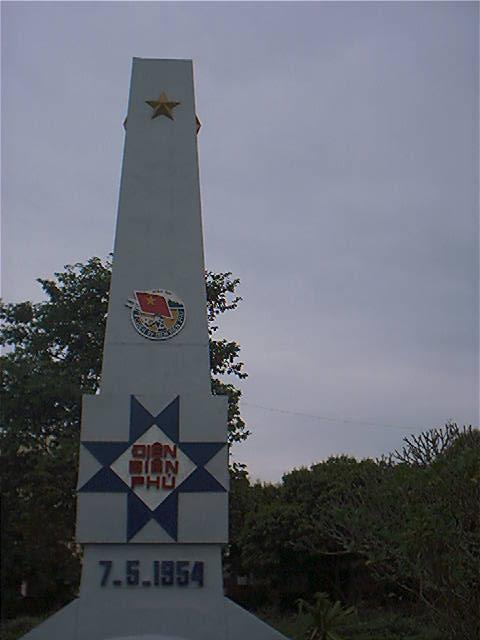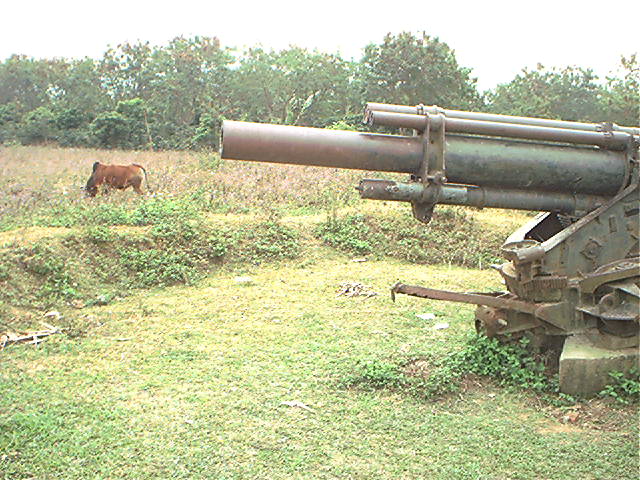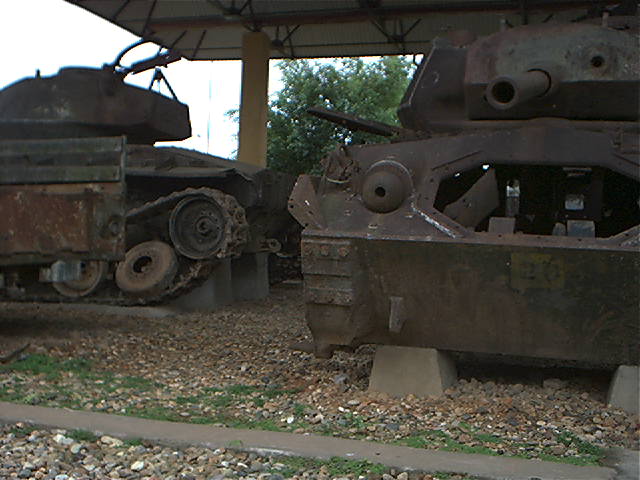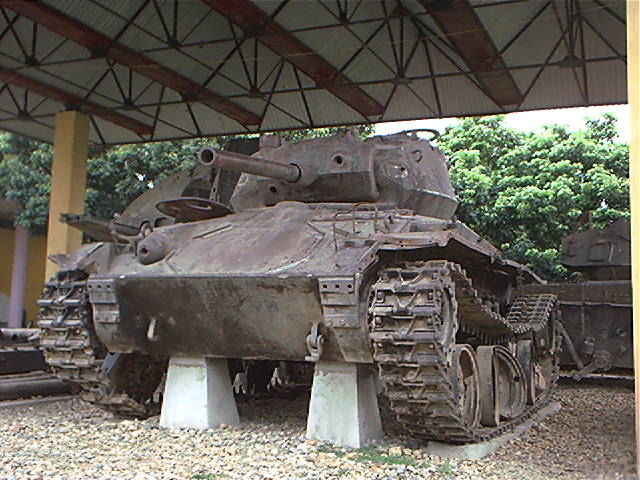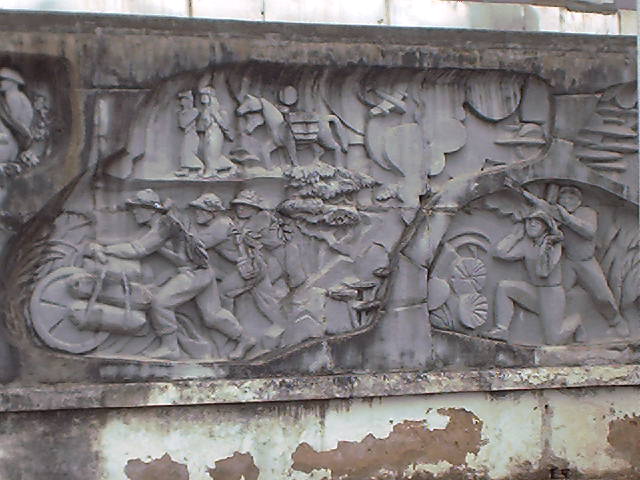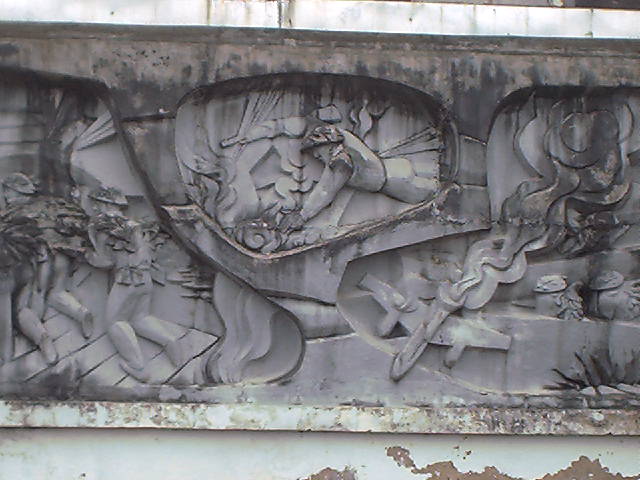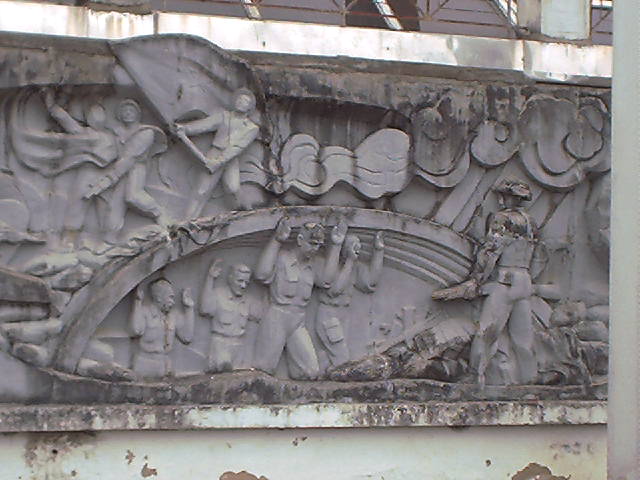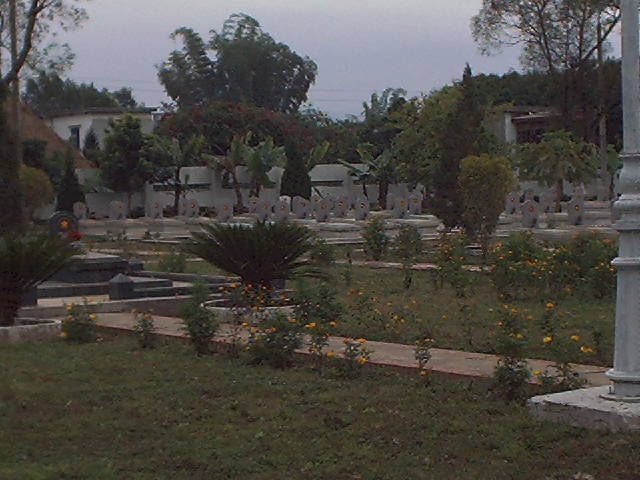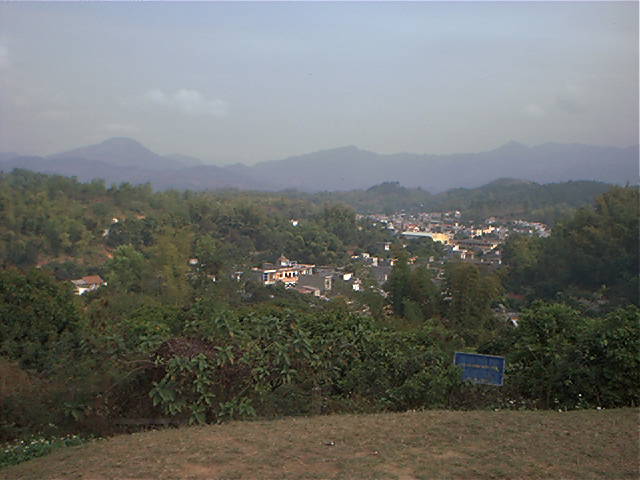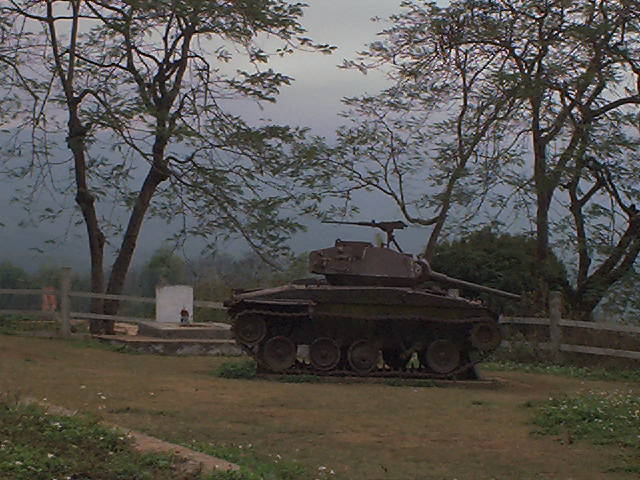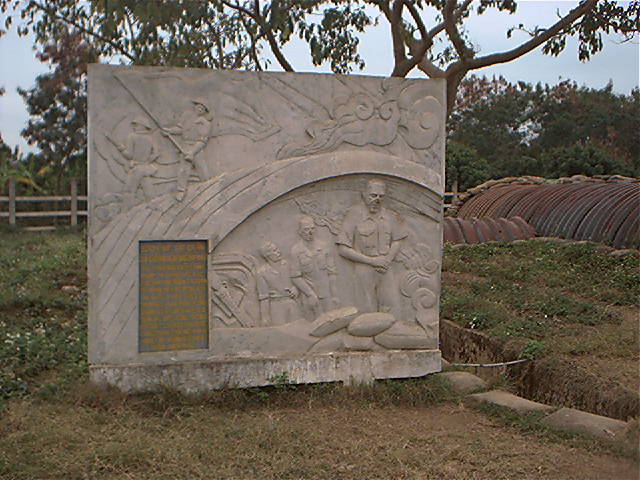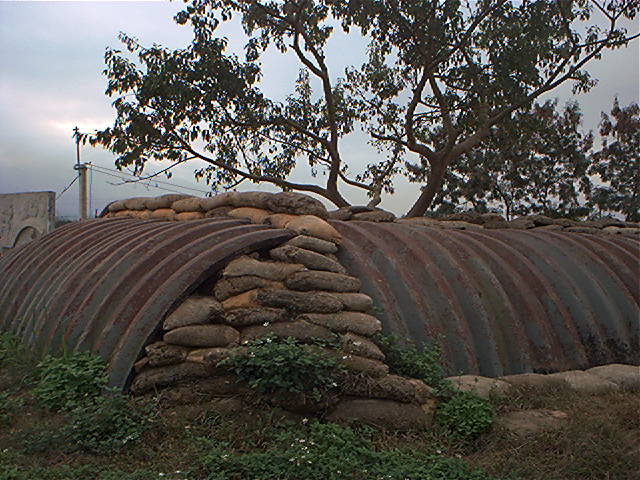
The Tet Uprising and Offensive 1968
More on the ‘Revolutionary Year’
31st January 1968 – The Tet Offensive in Vietnam
In the very early hours of 31st January 1968 gunshots started to sound out in the area of the United States Embassy in Saigon, South Vietnam. As it got light many more residents were woken by gunfire in hundreds of towns and urban areas throughout the southern part of divided Vietnam. The 30th was the Eve, the 31st the actual day of Tet, the Vietnamese New Year. Those gunshots sounded the beginning of what was probably the most decisive single military event in the undeclared war that the US waged against a small peasant country in South East Asia and which presaged the grim future for the invaders. Those gunshots sounded the beginning of the Tet Offensive.
What was the Tet Offensive?
The Tet Offensive was the name given to the offensive and general uprising that began on the night of 30th/31st January 1968. In Vietnamese it is Sự kiện Tết Mậu Thân 1968 – literally the 1968 Tet Event.
‘For nearly two months, this campaign, like a tidal wave, attacked four out of six big cities, 37 out of 44 towns and hundreds of district capitals’.
The first attack was made in Saigon at about 02.30 on the 31st when a small group of Viet Cong, irregular guerrillas living and working in the south of the country, blew a hole in the wall of the compound of the American Embassy in Saigon and for the next few hours engaged the Marines charged with the task of defending the iconic building and symbol of American force within the southern capital. By daylight 19 attackers and seven Americans lay dead. This was probably the only time during the whole of the uprising where there is agreement on the number of fatalities.
At first the Americans, including the Commander in Vietnam, General William Westmoreland, thought this was a one-off event, an adventurist, opportunistic, ‘terrorist’ attempt by desperate guerrillas to take a swipe at the US presence in their country.
Then reports started to come in from Saigon airport, then various areas within the city, then other cities, then other towns, then hundreds and hundreds of other locations throughout the country where American and South Vietnamese collaborationist power was under attack.
US supported South Vietnamese rule was being challenged and attacked on every level; military bases were under attack, as were administration buildings; various military and government officials who were helping in the occupation of the country were being targeted; the transport and communications infrastructure was being attacked and disabled, making response to the uprising more difficult to organise; armaments stores and other resources were destroyed and, perhaps most important of all, the Vietnamese resistance was on the streets of the urban areas carrying out all this mayhem when the general belief of the Americans was that they could only operate in the countryside and in the jungle areas.
The other shock to both the military on the ground in Vietnam and the politicos back in mainland United States was that they had been telling themselves, the world, and the Vietnamese Liberation Front that the Americans were winning.
Since the back-end of 1965 the Americans had been following a policy of ‘search and destroy’. This basically depended upon the superiority the Americans had in technology, resources and armaments. They would go out in force, either on land or in the air, destroy anything that moved and thereby win the war. Sheer power would destroy the opposition and it would be light on US casualties as there would be distance between the targets and the US technology. This was why it became normal practice for helicopter gunners to just shoot at anything that moved on the ground, more often than not poor peasant farmers, or their draft animals, trying to eke out a living from the soil. Those events, often depicted in Vietnam War films, actually happened! And, it should never, ever be forgotten that massacres such as that at My Lai (which was to occur on 16th March 1968) were taking place on a regular basis.
The Americans had been saying that they were forcing the guerrillas and regular North Vietnamese Army out of the south of the country, making it more and more difficult for them to challenge the rule of the puppet regime in Saigon and the puppet master. Apart from anything else they believed their own propaganda and intelligence sources – which might well have been feeding them what the North Vietnamese and the Viet Gong wanted them to believe.
And then the guerrillas were everywhere, organised, well armed and with a strategy of what they were doing.
And not only in the urban areas of South Vietnam.
The siege of Khe Sanh.
I said the first shots of the offensive were fired in the early hours of the 31st January. That’s not strictly true.
At dawn on the 21st January, ten days earlier, North Vietnamese long-range artillery began shelling the mountain top base and airstrip of Khe Sanh – a place very few people in the US had even heard of. On the first day more than 300 shells landed on this base, merely half a mile long and a quarter of a mile wide. The American Marines had been there for just under a year and before they realised it, even with all the modern technology that the US possessed at the time, the base was effectively surrounded and could only realistically be reached or provisioned by air.
The whole, relatively short story of Khe Sanh probably deserves a post in its own right but in relation to the Tet Offensive there are a number of points to stress.
In a sense the attack on the 21st can be seen as a distraction from the forthcoming uprising. Obviously the Americans would have been asking themselves why they had missed such a massive build up. Not only had the North been able to transport anything up to 20,000 fighters, with their equipment and a supply line that could keep them fed and cared for, they had also been able to transport heavy artillery (and even tanks that were used later during the siege of the base) and thousands of artillery shells. All this travelling hundreds of kilometres very often on nothing more substantial than a push bike.
That took a huge amount of forward planning and was far too much just to create a distraction. There was more behind the siege than that, although the distraction was an added bonus.
The US response to the siege was similar to their failed policy of ‘search and destroy’ – committing almost unbelievable amounts of resources into air raids on the ground where they thought the Vietnamese might be found. At one point there were 400 plus sorties A DAY. This included B52s dropping 500 pound bombs that no one knew were on the way until they landed, the planes themselves flying so high, and Phantom jets firing missiles and/or dropping napalm, effectively creating a lunar landscape. It failed. Although many of the commanders had fought in WWII they still didn’t seem to have learnt the lessons of Monte Casino in Italy or Okinawa in Japan.
At the beginning of April the Vietnamese started to leave quietly. One morning the Americans slept in as there were no shells giving them a wake up call, the base was relieved and then, within a matter of days, abandoned. They feared another Dien Bien Phu debacle of 1954, they left just in case it should happen in the future. Khe Sanh had shown them what they would have to face.
Khe Sanh had other strategic aims but the very fact that two, completely unexpected, events occurred at the exactly the same time was a shock from which the US never really recovered
Tet in Saigon, Hue and entrenchment.
I can understand, and appreciate, many of the actions of the Vietnamese during the Tet Offensive but questions come to mind when Saigon, Hue and a few other locations are concerned.
The use of heavy artillery and tanks, which were being used in the Khe Sanh siege meant a qualitative change in the tactics of North Vietnamese Army (NVA) and the Viet Cong – principally a civilian guerrilla army living amongst the population. Once an army starts to depend upon such material it is forced into a situation which is the opposite to that which a guerrilla army depends
Guerrilla warfare (and this was a theory developed by Chairman Mao Tse-tung in the war against Japanese Aggression and then the Civil War against the Kuomintang before 1949, later taken up in a masterful manner by General Vo Nguyen Giap in Vietnam) is where the liberation fighters use their strength – knowledge of the terrain, being part of the people, mobility, ability to strike quickly and then disappear – against a superior enemy, but superior only in that they have greater access to war materials, technology and a very deep pocket to pay for it all.
But the enemy’s strength is also its weakness. It’s totally dependent upon a sophisticated supply line which, in certain circumstances, can be isolated and then such a force basically dies of its own ‘strength’ – this was what happened at Dien Bien Phu to the French invaders in 1954, both a military and psychological defeat which saw the end of the European presence in Indochina. Such a problem doesn’t exist for a guerrilla army which can just melt away as the only equipment they have can be carried or easily hidden.
This also means that there’s no necessity for the guerrilla army to entrench itself into a fixed position – which seems to be what was planned in Saigon and even more so in the historic city of Hue.
After the initial skirmishes in Saigon a force of about 4,000 guerrillas ended up in the Chinese neighbourhood of Cholon. Soon fighting was on a block by block, house by house nature. Initially the much more heavily armed American and Army of the Republic of Vietnam (ARVN) tried to take control of the area in conventional, house to house fighting. This was, after all, their major city and the capital of South Vietnam. The world press were looking on and they had to keep up appearances.
However, after a few days of fighting and mounting casualties the Americans declared the area a free fire zone and ordered all civilians out of the neighbourhood. Despite that and with all the resources at their command it wasn’t until 7th February that the US and South Vietnamese government forces could say they had ‘complete’ control of Saigon again – after a number of the Viet Cong had silently left the area.
Here I don’t know why the North Vietnamese committed so much resources into a set battle they could not possibly win in 1968. By 1975 the situation was completely different and then ‘conventional’ warfare was an option. But at the beginning of 1968 they did not have the ability, either militarily or psychologically, to defeat the Americans and their lackeys.
The same question can be asked about why Hue was considered to be so important as to devote the greatest number of combatants from the start of the uprising and was even reinforced by troops from Khe Sanh. Thousands of the bravest and patriotic sons and daughters of the country were fighting in a battle that they didn’t need to fight and they could have been withdrawn to fight another day, when the chances of victory were greater – that, surely, if nothing else is the most important lesson of guerrilla warfare? It’s when that lesson has been ignored, on too many occasions in the last 70 years or so, that things go wrong and not only battles but wars have been lost.
Well into February the NVA were able to move more fighters and material into Hue. They should have done exactly as they were later to do at Khe Sanh – just up and leave one morning. As it was by the 24th February, when the Citadel in Hue had, once again, the flag of the South Vietnamese puppet state flying from its ruined ramparts, many hundreds of Vietnamese patriots lay dead, although, as in Saigon, many had managed to leave in the heat of battle.
Whatever the reasoning of the North Vietnamese for their positional warfare over a period of five to six weeks there was no doubt about the US response to such a situation on the ground – that is to destroy all, whatever might be in the way, to, hopefully, kill the enemy. The US decided that it would use its ‘advantage’, wealth, technology and overwhelming military power, to obliterate the enemy, whatever it might cost. What was said about the total destruction of Ben Tré, a small town to the south-west of Saigon, ‘we had to destroy it to save it’, became the axiom of American response then as now, as the people of Iraq, Afghanistan and Libya (among others) have learnt to their regret.
Also, as another indication of American hypocrisy and duplicitous thinking, in made no difference if that destruction was to concern anything that had cultural value to either the country or the world’s population in general.
The ancient and historic Citadel in Hue barely had a wall strong enough to plant the ‘victorious’ South Vietnamese flag on the 24th February. Mỹ Sơn, the longest inhabited archaeology site in Indochina, was devastated by B52 carpet bombing in a single week in August 1969. This was only to presage the irreparable damage done to the library and the looting of the museum in Baghdad in 2003 when the US, yet again, decided it had the right to invade a country to protect its interests. And now they criticise Islamic State for its deliberate destruction of the archaeological site of Palmyra in Syria.
Summary execution of the streets of Saigon.
It was in these early stages of the fighting that an incident took place in Saigon which was to define the nature of the war. On 1st February a Viet Cong officer, Nguyễn Văn Lém, was summarily executed, on camera, in the streets of Saigon by the Chief of the National Police, Nguyễn Ngọc Loan. International lawyers might waste everyone’s time in debating the ‘legality’ of this execution and excuses can be made for the murderer, i.e. he was upset at what he believed Lém guilty, but it demonstrated the nature of the conflict. The US and their puppets would do anything to make sure they maintained their power.

Murder on streets of Saigon
There’s no doubt that the Vietnam war – especially that part of it with US involvement – was a ‘no holds barred’ affair. However, it’s the hypocrisy that emanated from the Americans at the time (and still to this day in whatever conflict they might be involved) that they are the ones who maintain and hold the moral high ground. The falsity of that claim is proven by the farce of the ‘trial’, sentencing and then pardoning of those involved in the My Lai Massacre (which was to take place within a matter of days after the ‘end’ of the Tet Offensive) or more importantly the fact that many other villages suffered such a fate and those details have never been fully reported.
Who won at Tet?
What happens on the battlefield is not always the same as what has happened when there’s a review of the battle. Whatever the fine words and the emphasis on the body count of the Vietnamese patriots (which was far too high) it’s pushing things for the Americans to argue that they ‘won’ the conflict militarily. Wars don’t just end, even when there might be a significant battle towards the end of the conflict. That loss can normally be traced to some event in the past which meant that, however far down the road, defeat was inevitable. As with the battle of Stalingrad the defeat of the Hitlerite Fascists was inevitable – all that was in doubt was when. Tet played that role in Vietnam.
To start with it was a total intelligence disaster for the Americans. They knew there ‘was more activity than usual’ from the end of December but nothing that suggested a nationwide, co-ordinated and strategic attack; nothing that gave any indication of the sheer amount of movement of personnel and materials; nothing that would be so significant that, whatever the political leanings of the commentators, it would shape the future of American involvement in Vietnam and, if it hadn’t been accepted before Tet it certainly was after, that the Americans could not win.
In this intelligence disaster it is rarely stated that although the US and its lackeys didn’t know what was going to happen, a sizeable proportion of the Vietnamese population obviously did – if not the exact details they would have known something very big was in development. That’s not a real surprise. The Viet Cong were of the people and lived among them. There will, in any such situation, be collaborators, traitors and plain opportunists but it would not have been possible for the offensive to have been so extensive if it were not for the co-operation of many and the acquiescence of many more. What is particularly notable here is that many of those people who basically kept quiet would have been members of the South Vietnamese political infrastructure as well as the relations, and members, of the Army of the Republic of Vietnam.
To retake control of Saigon and Hue the Americans didn’t use any recognised military tactics, they depended solely upon the artillery and air power, and the force they were able to bring to bear in any location
Yes, they could spend billions of dollars, send thousands more young Americans to be killed, injured, traumatised in Vietnam. Yes, they could kill many hundreds of thousands of poor peasants, destroy what infrastructure existed in both the North and the South. Yes, they could feed the military/industrial complex money that could be better spent on projects helping those in need at home. Yes, they could eventually argue, which many still do, that they didn’t really lose the war – although crowds fighting to get on to helicopters on the roof of the embassy building in Saigon, at the end of April 1975, those helicopters then being dumped into the South China Sea afterwards as there was no space for them on the ships sent to aid the evacuation – seems to be a somewhat undignified manner to get out of a conflict they had been directly involved with for almost 25 years. And anyway, how can you lose a war that wasn’t declared in the first place?
After a post-mortem of the offensive, carried out by Clark Clifford, who was to take over as the new Defence Secretary from Robert McNamara at the same time as Tet was over, he realised that the Americans had ‘no military plan to win the war in Vietnam’. It’s astounding that such a high-ranking official in Johnson’s administration could make such a statement after the US had been meddling in Vietnamese affairs since the early 1950s. It’s even more astounding that the war was to carry on for seven more years, with all the death and destruction that went with it – on both sides.
The US Presidency.
Tet basically ended Lyndon Johnson’s political career – and probably shortened his life. At the New Year (Western style) he was anticipating a second full term at the White House, a victory in the US mirroring what they thought was greater success in the foreign war. He, and virtually all around him, had listened to and had believed their own propaganda – a dangerous thing to do. When you make statements for public consumption make sure you don’t con yourself in the same way as you seek to con them.
On 31st March 1968 he made a televised speech which began with ‘I want to speak to you of peace in Vietnam’ and ended by making the statement ‘I shall not seek, and I will not accept, the nomination of my party for another term as your President’. He did keep to his word about the Presidency but peace was to take another seven years before it knocked on the door of the Vietnamese.
The US Military.
The US commanders, especially Westmoreland, argued to his dying day that the Americans and their puppets had won Tet militarily. If the question is asked in the sense of who was it that was the most powerful force on the battlefield after Tet it might be true. But to ‘defeat’ the partisans the Americans had to create a wasteland, where everything was destroyed, where when the fighting stopped the people had nothing to return to but rubble. This was shown most clearly in Cholon (Saigon), Hue and the town of Ben Tre.
The idea of ‘if we can’t have it neither can you’ permeated US imperialist thinking then, for the rest of the Vietnam war and into the present, 21st century conflicts. In Vietnam, after Tet, the level of bombing increased – more bombs being dropped on Vietnam, in the ten years from 1965-76, than were dropped by ALL the belligerents in the Second World War; napalm and agent orange (a powerful defoliant) were used to deny the Vietnamese cover in the forests and jungles; and thousands and thousands of anti-personnel mines (especially brightly coloured ones aimed to attract children) were dropped to make daily activities a life threatening experience.
‘Destroy it to save it’, ‘better dead than Red’ was the motto then – and now.
The ‘psychological effect’ and the role of the media.
But military success, whatever that might mean, is not the only thing that’s necessary for winning a war. The psychological aspect has become even more important in the age of fast communication. The conflict in Vietnam was considered to have been, probably, the most photographed and filmed war of the 20th century. Images of dead and wounded soldiers being shown on television within hours of it happening was something that had never occurred before.
There were also a number of images that seemed to define the conflict – and in all these the Americans and their allies came out in a bad light. Apart from the summary execution of Nguyễn Văn Lém (mentioned above) there was that of Thích Quảng Đức, a Buddhist monk who burned himself to death on the streets of Saigon on 11th June 1963 (in protest at the activities of the Ngô Đình Diệm government of the US puppet regime at the time) and that of Phan Thị Kim Phúc, a nine year old girl photographed running naked along a road, with other villagers, after a US air force napalm attack on 8th June 1972.
Westmoreland constantly harped on about the media being one of the causes of the US withdrawal from the conflict and the growing opposition to the war back home in the United States. He would have preferred the world to have only heard the stories that had been produced by the US propaganda machine, copies of ‘Stars and Stripes’ – the internal army magazine – dropping through everyone’s letter box. But even if the US had been able to control the dissemination of news they couldn’t have hidden the almost 60,000 black body bags that were returned to the United States.
However, ‘freedom of the press’ has been restricted in subsequent imperialist wars, firstly in Britain’s shameful war in the Malvinas (1982). Then, as now in the increasing number of conflicts of the 21st century, journalists, photographers and film crews are ’embedded’ with the invading troops. Such a situation both restricts their movement and also creates an environment where they actually get to know the soldiers on the ground and will be more reluctant to report stories that would place them in a bad light. And, of course, anyone selected would undergo a strict vetting process, so they would be less likely to report unfavourable news in the first place.
The consequences of Tet.
In terms of casualties on the North Vietnamese and Viet Cong side I know of no exact figures, but they would have very much outnumbered those of the enemy. Hà Văn Lâu, a military commander against the French and later a diplomat said, in the Canadian made documentary, ‘Vietnam: The Ten Thousand Day War’ (1980), that the high cost in personnel and materials ‘was the price we had to pay to win this strategic victory’. That is both true and not.
Throughout history there have been many who have been prepared to die for the liberation of their country. Mao’s theory of guerrilla warfare gave an ideology to those struggles and a way forward that offers better chances of success. However, I would be happy to see a return to the situation where it is the enemy who takes the brunt of the pain and more workers and peasants are around to see, to celebrate and to benefit from the final victory.
However, I agree that the strategic aim was achieved; the National Liberation Front had shown that it could effectively take the combat to the US and its puppets in the cities; they proved they had the organisational infrastructure to carry out such activities; they had shown the enemy something of their potential for the future; they had given hope to those having to live under the neo-Fascist regimes in Saigon and the occupation of the country by a vicious, imperialist military; they had proven that they could defeat the invader in certain circumstances; they had broken the enemy psychologically; and they had made the first moves to eventual victory.
When was Tet in 1968?
Researching this article I became confused with what seemed conflicting information. It was only when I read something about the changing of the date of Tet that light was shone on the issue. At the end of 1967 the government of North Vietnam decided that Tet in 1968 would fall on 31st January. This was an adjustment to the calendar which did not happen in the South. So when there was an order that the offensive would start on the Eve of Tet there was some confusion in certain parts of the country.
This could have been disastrous in other circumstances. In 1968, however, this confusion acted to benefit the insurgents as attacks were made in the more marginal urban areas and this had the effect of disguising the attacks that were to take place in the likes of Saigon and Hue.
Nonetheless, it seems to be a risky business to change a calendar, no matter the justification, of a particular festival when you were planning a major military event for that very day. It seems there was a slight communication problem within the government departments in Hanoi.
‘The Têt Mâu Thân 1968 Event in South Vietnam’ by Hô Khang, Thê Giói Publishers, Hanoi, 2001.
This is the only account of the event that I have encountered written from the Vietnamese perspective that is available in English. It should be remembered, however, that by 2001 Vietnam had turned away from the road of Socialism and was storming along towards the full embrace of capitalism.









